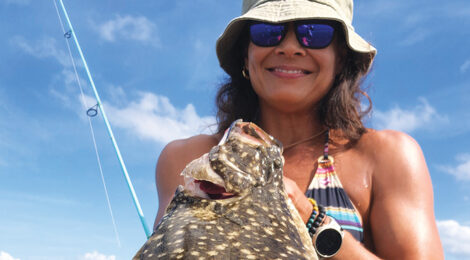
Spring Flounder Fishing
The key differences between the spring and fall flatfish runs have to do with direction, intensity, and duration.
Story and photography by Danno Wise
Flounder occupy the third rung of the “Big 3” in Texas coastal waters. So, while they are a popular target species for sport fishermen – and even more popular as table fare – they tend to take a backseat to redfish and speckled trout the majority of the time. This is perhaps never more true than during the spring months.
There are a couple of distinct reasons for this. For starters, almost every inshore angler in the Lone Star State is firmly focused on speckled trout during spring. And, certainly, spring is about as good as it gets for speckled trout – both numbers of “box fish” and top end keepers.
However, flounder fishing will also be on the uptick and once the final cold snap of winter has passed, flatfish fishing will be going full bore, albeit often under the radar. Another reason flatties are usually overlooked during spring is most everyone thinks of autumn when it comes to flounder fishing. However, the spring flounder “run” can be every bit as productive and exciting, although it does work a little differently.
So, then, exactly why is spring flounder fishing so good? There are several factors that account for that, starting with the spring flounder “run.” Basically, during spring flounder will replicate their fall run in reverse. After spending the winter spawning in the Gulf of Mexico, flounder begin making their way back into the bay, where they will stay until late fall.
The key differences between the spring and fall runs have to do with direction, intensity and duration. Starting with the obvious, flounder coming in from the Gulf will be moving in the opposite direction than they did when they left during fall. So, activity tends to begin at the Gulf passes and areas closer and spread from there over subsequent weeks.
************************************************************************
To read more, click here to SUBSCRIBE








